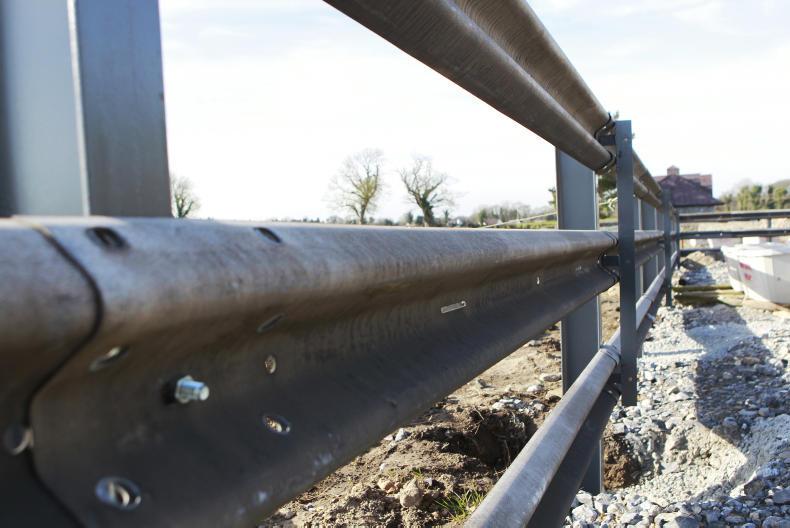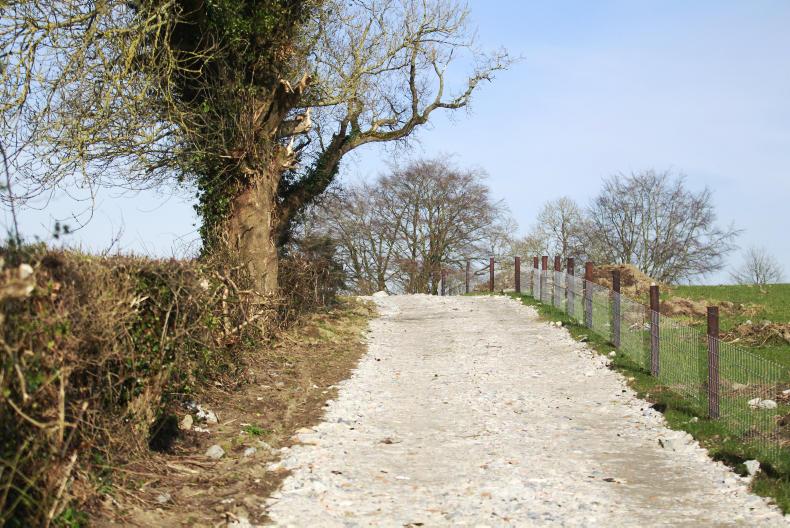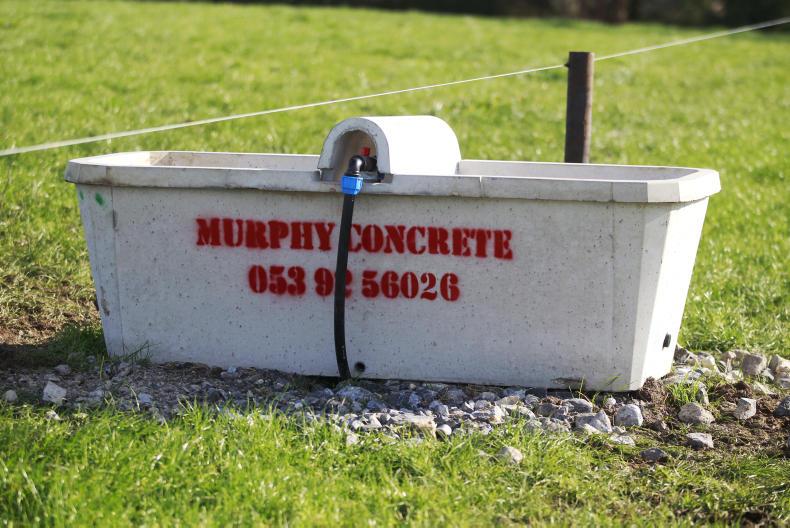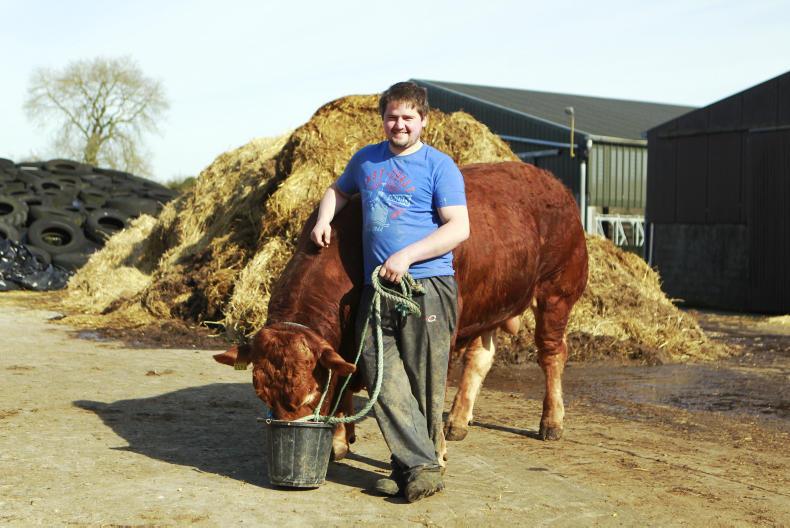For the past two years, the Irish Farmers Journal has been looking to establish a standalone mixed grazing demonstration farm. We were pretty demanding. The farm had to:
It wasn’t easy, but we got there. At the start of 2016 we met the Grogan family. Padraig and Joan Grogan have been farming full-time for the past 46 years and had been running a beef finishing and tillage enterprise. Joan is a recently retired teacher. With the four children – Joseph, Sarah, Peter and Partrick currently pursuing their own careers – Padraig and Joan were keen to put a plan in place that would allow them the flexibility to pursue other interests. Not an easy job when you are trying to farm over 200 acres.
Against this backdrop we sat down with Padraig and Joan to discuss options. It was clear early on that a long-term lease was going to be the best route for both parties – mainly because it delivered a level of security. While most of the terms and conditions were thrashed out over the kitchen table, over cups of tea and copious amounts of home-baked apple tarts, we decided early on that both parties should engage legal representatives to ensure peace of mind. In November 2016, again around the kitchen table, we signed a 15-year lease with the Grogan family and in January 2017 it commenced.

At the outset our focus was to try to establish a lease that could be used by others as a template. While the lease is based on a standard IFA master lease, there a few interesting tweaks including:
60:40 split on capital expenditure
We have agreed that capital expenditure would be split 60:40. We would carry 60%, with Padraig and Joan contributing 40%. While the cattle yard was well-equipped, included in the lease will be a capital expenditure plan around fencing, roadways, drainage and improved cattle handling facilities.
Managing the BPS into the future
This was probably the hardest area to get right given the uncertainty around the direction of the CAP. In the end it was agreed that Padraig and Joan would retain their basic payment and production-related payments would be claimed by the Irish Farmers Journal – for example, the suckler cow payment, sheep payment etc. We were obviously celebrating the announcement by Minister for Agriculture Michael Creed last week that the BDGP was to reopen for new entrants. This structure would be used to distribute payments post-2020. As the farmer, we would be responsible for ensuring the farm met all compliance regulations.
Agreeing the annual rental fee probably generated the least debate. It was settled at €140 per acre with rent reviews to take place in 2022 and 2027 – linked to beef price.
The complete lease will be available when we launch the website for the farm.
Because we are passionate that:

The farm is in Brackagh, Screggan, Tullamore, Co Offaly – right next door to Tullamore golf course. It consists of 180 acres split into three blocks of 100 acres, 60 acres and 20 acres. Sixty per cent of the land would be described as being free-draining, while the remaining 40% would be described as heavy in nature with some drainage work required.
The farm was in 20 divisions but when our fencing project is complete it will have 40 divisions with the option of further sub-divisions.

Digging, fencing, water troughs
The farm has been operating as a beef finishing farm over the past 40 years with a small tillage operation and while it was kept in good farming condition, it required some major infrastructural investment to run a high-stocking-rate grass-based system – drinkers, water system, roadways, fencing, gates and reseeding.
Twenty-one acres were reseeded in June 2016 and a further 44 acres were reseeded in September 2016. Once the lease commenced on 1 January 2017, one of the first jobs was to get a digger in to clean out all existing drains and take back overgrown hedges to original hedge line to enable fences be erected on the hedge-lines.


We have also completed 1,200 metres of farm roadway to provide better access to paddocks. We have erected 10,000m of cattle fencing (single strand and double strand electric fence).

We have set up a company called Tullamore Farm Ltd. This is registered with the Company Registrations Office and will have to submit annual audited accounts to the Revenue Commissioners. IFAC will have full responsibility for generating farm accounts.
Let’s be clear at the outset – what we are not trying to demonstrate here is that you can rush out to borrow 100% of the capital required and rent 180 acres of land and put in a suckler and sheep flock and expect to make money – as we will prove it is not possible.

We were starting from a blank canvas without stock, land or even a claw hammer – never mind a tractor. Therefore, there are significant up-front costs and perhaps the first thing we have shown is how important it is for young farmers thinking of expanding to have access to finance at a competitive rate.
We are fortunate in that the board of the Agricultural Trust (which owns the Irish Farmers Journal) has agreed to provide the farm with a loan at an interest rate of 3.5%.
By the time we stock the farm, contribute our percentage to the capital expenditure programme and acquire the necessary machinery, the total outlay will be €460,000. On top of this a working capital loan will be required as it will be 2019 before the farm is generating significant income. Again this will be charged to the farm at 3.5%.
Listen to a discussion of the project in our podcast below:
Listen to "Mixed grazing on Irish Farmers Journal demonstration farm" on Spreaker.
The focus of this project is to show that beef and suckler production can make money on a per-hectare and per-hour basis. Every decision taken will be focused on driving profitability – politics will be left at the gate and we will respond to the market signals.
Making a profit will be a challenge given that we will have no basic payment, will be paying full labour and land rent, and will have to repay the loan required to establish the farm. A farmer owning the land, using his own labour and with a low level of borrowings would have a €90,000 head start.
Nevertheless, we are still confident that when the farm is up and running we will be able to generate a modest cash surplus – but everything will have to go right. In reality it will be year three before the farm is operating to capacity.
So how will we do this? We will basically try to put into practice what we preach to farmers every week in the Irish Farmers Journal.

How will we manage it?
Ger O’Dwyer is the full-time farm manager and will be employed by Tullamore Farm Ltd. Ger is a graduate of WIT and has previously managed a dairy farm. He has spent time in New Zealand as part of his studies and brings a lot of grassland management experience to the role.

Ger O'Dwyer.
Casual labour will also be utilised at peak workload periods and a budget has been put in place to provide cover at weekends etc. The Irish Farmers Journal livestock specialists will work closely with Ger to drive farm performance and will meet five to six times annually to review progress.
The beef production system
The suckler system is built around a high replacement index cow irrespective of breed. The herd will be spring-calving, with cows calving predominantly in February and March. Cows are predominantly first-cross Limousin or Simmental and will be mated to high replacement index bulls with good terminal traits also.
The focus of our breeding programme will be to:
We feel that we will have high-index, high-health-status replacement heifers with full performance history suitable for farmers who do not breed their own replacements. Cows will be artificially inseminated in year one to high-index sires with Limousin and Aberdeen Angus bulls being used to clean up for a further four weeks.
The sheep system
The plan will be to run a flock of 120 ewes and manage the flock alongside the cattle system with a mixed grazing policy.
Teagasc studies have demonstrated that some of the benefits of mixed grazing include a 7% increase in growth rate of steers and lambs at a constant stocking rate or a 13% increase in stocking rate without affecting animal growth rate, compared with cattle-only or sheep-only grazing. These benefits were attributed to complementary grazing between cattle and sheep. Ewes will be purchased in autumn 2017, will be high-prolificacy cross and will be mated to a terminal ram. The system will be mid-season lambing with lambing starting on 20 March and completed by 31 April. Lambs will be drafted for sale in July, August and September. The later lambing date is to stagger peak workload in both systems
Herd/flock health
The farm will operate to a high health level with a disease prevention policy and maximum bio-security. We have developed a herd health plan which involves vaccinating cows for BVD, lepto and scour. Calves will be vaccinated for clostridial disease at six weeks and 10 weeks and will receive a pneumonia vaccine pre-weaning. All animals will receive routine doses for external and internal parasites and liver fluke.

Sixty cows arrived on the farm on 1 October 2016. A further 53 cows/in-calf heifers were purchased in January and February 2017. We purchased from seven herds to minimise disease issues.
Cows started to calve on 4 February and so far we have 108 calved with 106 live calves. There have been three C-sections and four other vet-assisted calvings. One calf was a stillbirth and one calf died at six weeks old with a liver abscess.
We have lost three cows – one with Johne’s disease, and two with grass tetany. All cows have since been tested for Johne’s and have been confirmed clear. An annual testing programme is now in place. Cows had licks with them but since these losses occurred we have been feeding cal-mag at grass and also mixing hydro-mag in drinkers. Both incidences of tetany occurred after calf de-horning which probably acted as a stressor.
As we are relatively lowly stocked for the 2017 grazing season, we also purchased 60 Hereford and Angus X heifer calves with a view to finishing these off grass in autumn 2018. Cows were turned out on 19 February and fed silage via feeders until 8 March. All cows have been vaccinated for BVD and lepto and all calves have been de-horned and vaccinated for clostridial disease.
We plan to establish the ewe flock on the farm this autumn.
It’s important to us that everything that happens on the farm is documented. We commit to report on what we get right and what we get wrong –though we will try and keep the latter to a minimum.
Factual reporting with mistakes and successes shared is the model we feel will give farmers the technical knowledge and confidence to make small changes to their farms and in turn become more profitable. Farmers will be able to follow progress on the farm in a number of ways.
New suckler and sheep demonstration farm in Tullamore
Editorial: combining the power of sucklers and sheep on new demonstration farm